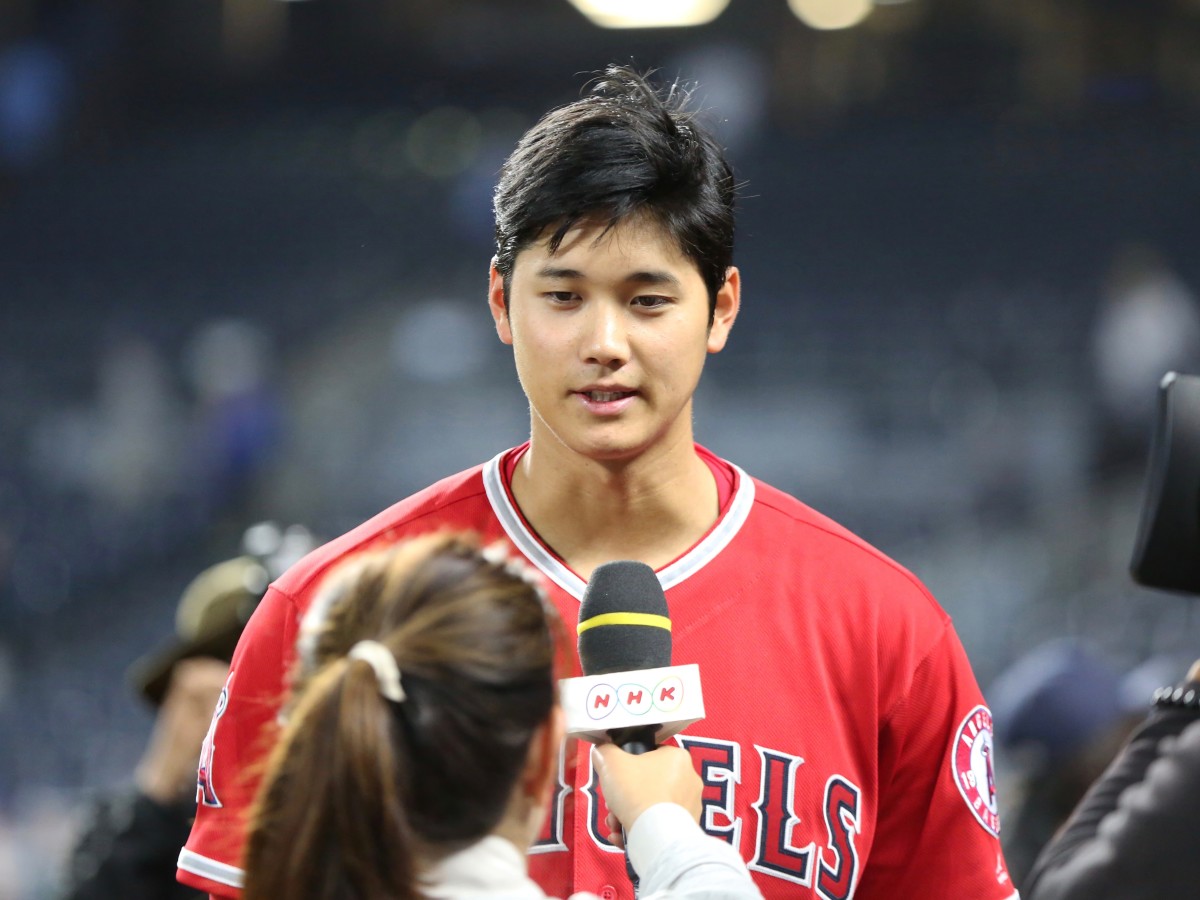While Shohei Ohtani Mesmerizes Major League Baseball, His Legend Grows in Japan

In 2002, Hideki Matsui hit 50 home runs for his Japan League baseball team, the Yomiuri Giants. Though he was just eight years old that summer—and though Matsui was among his favorite players—Shohei Ohtani intuited what would happen next. It was all but decreed that Matsui would leave Japan, cross the Pacific, and replicate his prodigious slugging in the Major Leagues. Which he did, playing the next five seasons for the Yankees.
Ask Ohtani if he recalls being at all upset by Matsui’s departure, and he flashes the mystified grin that has suddenly become familiar to anyone who’s watched baseball this season. “I thought it was a really good thing,” Ohtani says through a translator. “I was more proud to see my countryman doing well. And if [Matsui] wasn’t able to make the move, then we would never have been able to see how the best Japanese players perform in the States.”
Of course, it is now Ohtani, an Angels rookie, who is showcasing how the best Japanese players perform in the States. The hitting pitcher (or is it pitching hitter?) became the sensation of the NPB, and then—a baseball destiny that had to be obeyed— brought his unlikely act to the Majors. And while we’re still in the early innings of the season, so far, two-way Shohei has been odoroku bakari, translated roughly as “awesome.” As often as myths of greatness reveal themselves to be just that, so far this is breaking like the sports story of the year.
For all the abundant feel-good angles—conventional wisdom getting caught looking; a moribund sport getting a shot in the arm; a rare case of an irrationally hyped athlete exceeding expectation—consider this one: Ohtani’s extraordinary moonlighting is playing as well in Japan as it is here. So often in sports, one league’s “overseas sensation” is another league’s loss. In this case, there’s no sense of disloyalty, no sense of cultural misappropriation. Ohtani didn’t abandon Japanese baseball; he is validating it. “There’s certainly no ambivalence here,” says John E. Gibson, an American who’s covered baseball in Japan for the last 20 years. “There is a grand sense of pride.”

For three straight days, Japanese national newscasts led with stories of Ohtani’s home runs. (Viewers were advised that they were not rewatching the previous day’s news, but rather getting accounts of another Ohtani blast.) In restaurants, patrons stop their conversations and gather around monitors to watch Ohtani’s at-bats. In offices, work stops when he comes to the plate. “Even the higher-ups don’t mind a few minutes of less-than-efficient work time,” says Gibson, “because they’re mesmerized as well.”
Shohei-mania rages with special ferocity in Sapporo, where Ohtani had spent the previous five seasons playing for the Nippon Ham Fighters. Fans still wear his jersey and cap. Before Fighters’ games, Ohtani’s MLB highlights play on the stadium video boards. (Yes, it helps heal separation anxiety that the franchise, plumped by the $20 million posting fee the Angels paid for Ohtani’s rights, were able to rebuild.)
Ohtani’s former teammates are raptly following his progress as well. The Fighters were on the road in Sendai last week when Ohtani hit his second home run for the Angels. “We were all watching in the clubhouse and everyone was going crazy, jumping up and down,” says Fighters third baseman Brandon Laird, himself a former major leaguer. “It’s almost like he’s still part of the team.”
The Fighters wear blue and green. But scanning the stands at the Sapporo Dome, you’d be forgiven for thinking the team colors are red and yellow—such is the popularity of Angels apparel among the faithful. In part, it’s homage to Ohtani. But it’s also a show of respect for the franchise itself. Before Ohtani departed to the Majors, Japanese fans were wary that, after a hitting slump or a rough outing on the mound, his risk-averse MLB overlords would make him choose one position and abandon his experiment. Last year, as Ohtani was deciding which team to join, his longtime manager in Japan’s Hideki Kuriyama pleaded with the suitors, “Please trust him all the way through.” That is: trust the process.
To their credit, the Angels did. Despite Ohtani’s dismal spring, the team stuck to the plan, allowing Ohtani to DH during the week, rest for a day and then take his turn in the rotation. And with each home run that leaves Ohtani’s spring-loaded bat, with each opposing batter left cleaving air as a fastball hisses past, this faith is rewarded.
The Great Ohtani Experiment continues, accumulating interest, fans and data points in equal measure. Better still, it all comes with the echoes of a cultural exchange, not a trade deficit.
